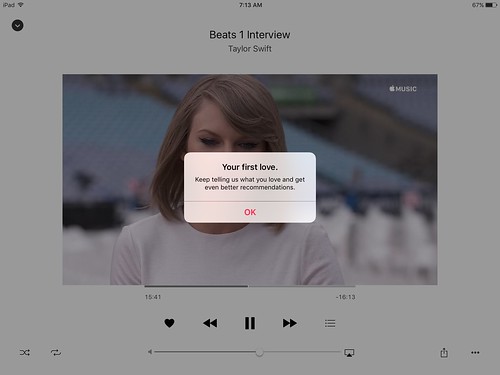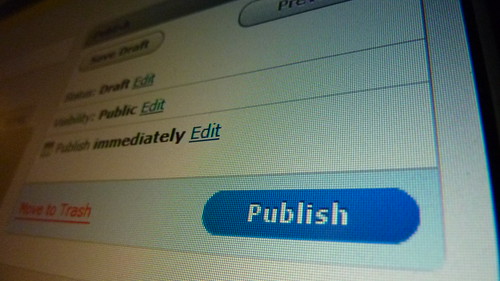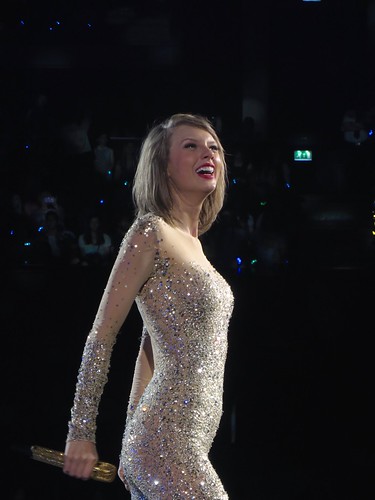Our 15 year daughter is understandably taken with Taylor Swift (@taylorswift13). Last night we were considering joining Apple Music so she could watch Taylor’s 1989 World Tour Live show, which is exclusive to Apple Music.
As a result of those conversations, this morning I watched Taylor’s 20 minute interview with Zane Lowe (@zanelowe), which is available within iTunes for iOS (and on other platforms, I’m sure) as an entree / teaser to her 1989 Live Tour video and the overall Apple Music membership / 3 month trial signup. The entire interview is good, but I was particularly interested in the initial segment when she discusses the open letter to Apple she published on her blog in June 2015 about artist royalties and Apple Music. (“To Apple, Love Taylor”) That was a courageous act of “publish at will” advocacy, and had a trajectory which she and everyone else (including Apple) couldn’t predict with certainty.
To read quotes from the interview, rather than watch the original, check out this recent post by Elias Leight (@ehleight). Among other things, referencing her reasons for taking the risk to publish the letter openly, Taylor stated:
…for any little kid who’s taking piano lessons right now, I want them to have an industry to go into. Looking at it now, having Apple change something so important for us in the music community, it opened my mind to the thought of working with them.
Also significantly, Taylor said she showed the letter to her mom and sought her advice before clicking the PUBLISH button. Decisions about when to click PUBLISH and how to decide if that’s a good idea, particularly when the stakes are high, are extremely important topics to discuss today. It should be a vital part of any school curriculum focusing on “digital citizenship.”
Taylor certainly IS working with Apple now, and it’s significant that her decision is what finally pushed our family over the edge to try Apple Music. I’ve avoided it up to this point, because I really don’t want a perpetual $10 or $15 (family plan) monthly subscription payment. I think Taylor is an exceptional role model for both our daughters for several reasons, however, and the chance for them to see her 1989 Live Tour (which unfortunately we were not able to see in person) is too good of an opportunity to pass up. So… we’re now Apple Music “family plan” trial members for 3 months. I’ll let you know by March 26th if we decide to continue the subscription on a paid basis.
Thank you, Taylor Swift, for the example you set in not only writing but also publishing “To Apple, Love Taylor.” Your courageous act has not only impacted the music industry, it has also provided a great topic of discussion for parents and kids, and teachers and students, who are all navigating our new “publish at will” media landscape. We all face many decisions and choices. Your letter to Apple over artist royalties can be a helpful catalyst for important conversations about digital publishing, the consequences for advocacy, the importance of voice, and our responsibilities to speak out on issues which matter.
I encourage all those reading this post to watch Taylor’s interview with Zane. Access to that interview does not require a subscription to Apple Music, but it does require iTunes. Who knows, this may also push you over the edge to sign up for a 3 month trial to Apple Music… especially if you have teens and/or pre-teen girls in your house!
If you enjoyed this post and found it useful, subscribe to Wes’ free newsletter. Check out Wes’ video tutorial library, “Playing with Media.” Information about more ways to learn with Dr. Wesley Fryer are available on wesfryer.com/after.
On this day..
- Combine Audioboo Sound Recordings with Audacity – 2013
- When Creative Musical Genius Meets YouTube – 2012
- Incredible Oklahoma City Christmas Lights Powered by Light-o-Rama – 2011
- The Dangerous Nexus of Cyber Charter Schools & For-Profit Curriculum Companies – 2011
- Standardized Test Results Obfuscate Real Learning – 2011
- Smartphones on the rise, Apple v Google Approaches – 2010
- We Learn What We Do – With Media Too – 2010
- IgniteOKC – Ubuntu Netbooks for All Learners – Now! – 2009
- What’s going on with oil prices these days? (Challenge your students in 2009 to find out) – 2008
- Wrangling with email contact lists and Christmas card mass mailing options – 2008



